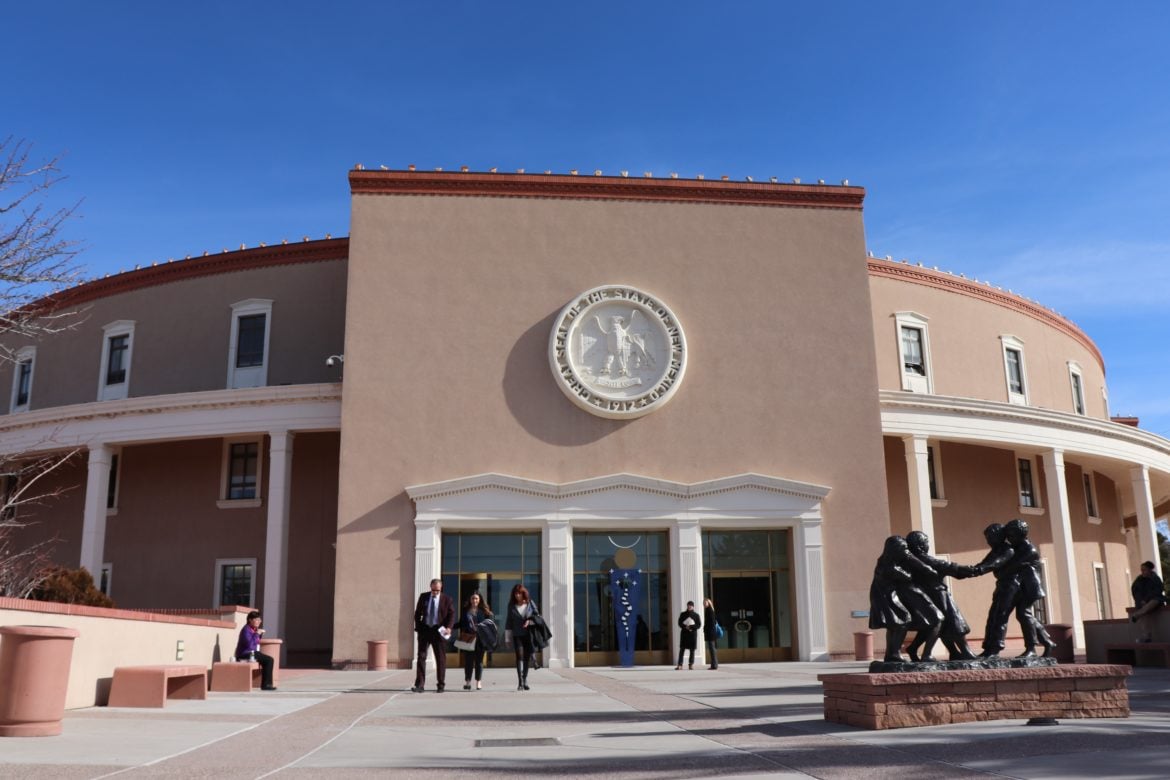Update: Shortly after publishing the following newsletter on Friday, Senate President Pro Tem Mimi Stewart, D-Albuquerque, wrote in an email to New Mexico in Depth that lawmakers would include transparency in a revised junior bill during an upcoming special session. She said lawmakers would use as a model new transparency measures passed last year for capital outlay allocations. “I wish we had done this originally but we think we have an answer to how to make those changes,” she wrote.
Later on Friday, Gov. Michelle Lujan Grisham and legislative leaders announced a special session of the Legislature would convene on April 5, to take up a revised junior bill and consider measures they can take to help New Mexicans in the face of rising inflation.
After sending out our newsletter last week about lawmakers’ outrage over the governor vetoing their dark spending bill, I had a moment of deja vu. Why? One lawmaker, Rep. Joy Garratt, D-Albuquerque, quickly sent me information about how she spent her portion, of the $50 million spending package, and another, Rep. Roger Montoya, D-Velarde, said on our Facebook page that we could find his appropriations on his website.
It felt like I was about to redo a year-long project from 2019 when I asked all 112 state lawmakers to tell me how they were spending their individual slices of public infrastructure money, known as capital outlay.
To recap, a few weeks ago Gov. Michelle Lujan Grisham vetoed Senate Bill 48, in common parlance called the “junior bill”, and lawmakers have rattled the cages since then to call themselves into an extraordinary legislative session to override her veto. It’s called junior because it’s a special supplementary spending bill to the annual state budget.
The junior bill doesn’t happen every year, but when it does, each lawmaker gets the chance to earmark a portion of the bill – worth $50 million this year – to projects in their districts or across the state. The House and Senate each received $25 million, with each House member able to earmark about $360,000 and each senator about $600,000 for projects.
Arguments abound about whether or not allowing lawmakers to earmark public money as they see fit is good public policy.
Separate from that question is whether or not that information is public. Currently, the public can see what projects are funded but not which lawmakers requested money to pay for them. In other words, how individual lawmakers spend public money under their control via the junior bill is kept from the public.
That needs to change.
We’ve fought this battle before. Until recently, the annual state infrastructure spending plan contained private earmarks made by individual lawmakers.
New Mexico In Depth first reported on the secrecy in capital outlay spending in 2015, when the Legislature denied our public records request for individual lawmakers’ capital outlay allocations. It took six years to make those earmarks more transparent thanks to a concerted effort by a group of lawmakers as well as advocacy and media organizations. One can now easily find on the Legislature’s website how a particular lawmaker allocated public infrastructure money under their control.
In 2019, after the state senate killed the capital outlay public disclosure bill, I asked every lawmaker to send me a list of projects they had funded in the public infrastructure bill. It took the better part of that year for me to assemble an inventory of projects from 97 lawmakers. An additional 15 lawmakers that year refused to provide the information, or just didn’t respond.
More than a few lawmakers told me how transparent they were in 2019 as they pointed me to their websites or shared their spending requests.
With junior, the public shouldn’t have to spend a year trying to ferret out how lawmakers are spending public money. The public shouldn’t have to wait six years for state lawmakers to disclose how they spend public money and I shouldn’t experience deja vu.
By law it should be public information, not subject to whether a lawmaker wants to provide it.
When she sent me her junior bill allocations, Rep. Garratt wrote: “all “junior” money allocations should be public—that’s taxpayer money. I think there is agreement on that.”
Most lawmakers believed capital outlay spending should have been public in 2019 when I requested they hand over their earmarks.
I assume that remains true. If lawmakers override the governor’s veto of the junior bill, or pass a new junior bill whenever they meet again, they should make their spending public.
